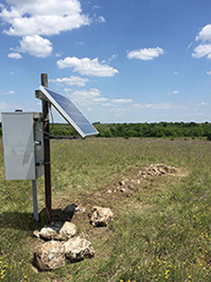Share:
OVERVIEW

Although induced seismicity related to underground injection activities was first observed in the 1960s at the Rocky Mountain Arsenal near Denver, a dramatic increase in earthquake activity in the midcontinent beginning in 2009 focused attention on the potential hazard posed by earthquakes induced by injection. The science required to understand the process and predict its impacts is still undergoing significant change.
In 2020, the Ground Water Protection Council, in partnership with the Interstate Oil & Gas Compact Commission and oil and gas producing states, developed a report update to the 2017 Potential Injection-Induced Seismicity Associated with Oil & Gas Development: A Primer on Technical and Regulatory Considerations Informing Risk Management and Mitigation. The updated report included Carbon Capture and Storage along with updates to case studies and state regulation summaries. The report update can be found under the Induced Seismicity Resources on our website.
Additional Reading
- Induced Seismicity Resources
News
Publications
- 2023 State Oil & Natural Gas Regulations Designed to Protect Water Resources (Fourth Edition)
- Potential Induced Seismicity Guide: A Resource of Technical and Regulatory Considerations Associated with Fluid Injection
- State of Kansas Class II UIC Program Peer Review
- 2017 Revision: Potential Injection Induced Seismicity Associated With Oil & Gas Development: A Primer On Technical & Regulatory Considerations Informing Risk Management & Mitigation
- Potential Injection-Induced Seismicity Associated with Oil & Gas Development: A Primer on Technical and Regulatory Considerations Informing Risk Management and Mitigation
- OPPORTUNITIES TO PROTECT DRINKING WATER SOURCES AND ADVANCE WATERSHED GOALS THROUGH THE CLEAN WATER ACT
- White Paper Summarizing 2013 Session On Induced Seismicity